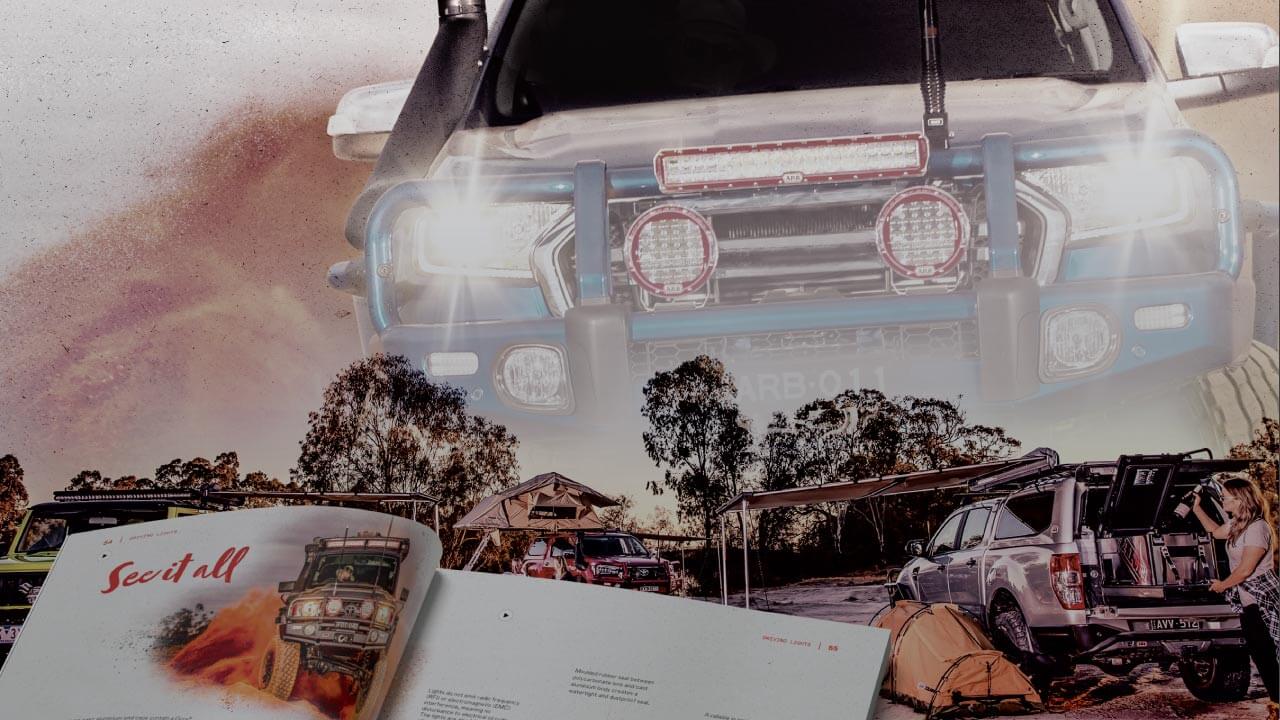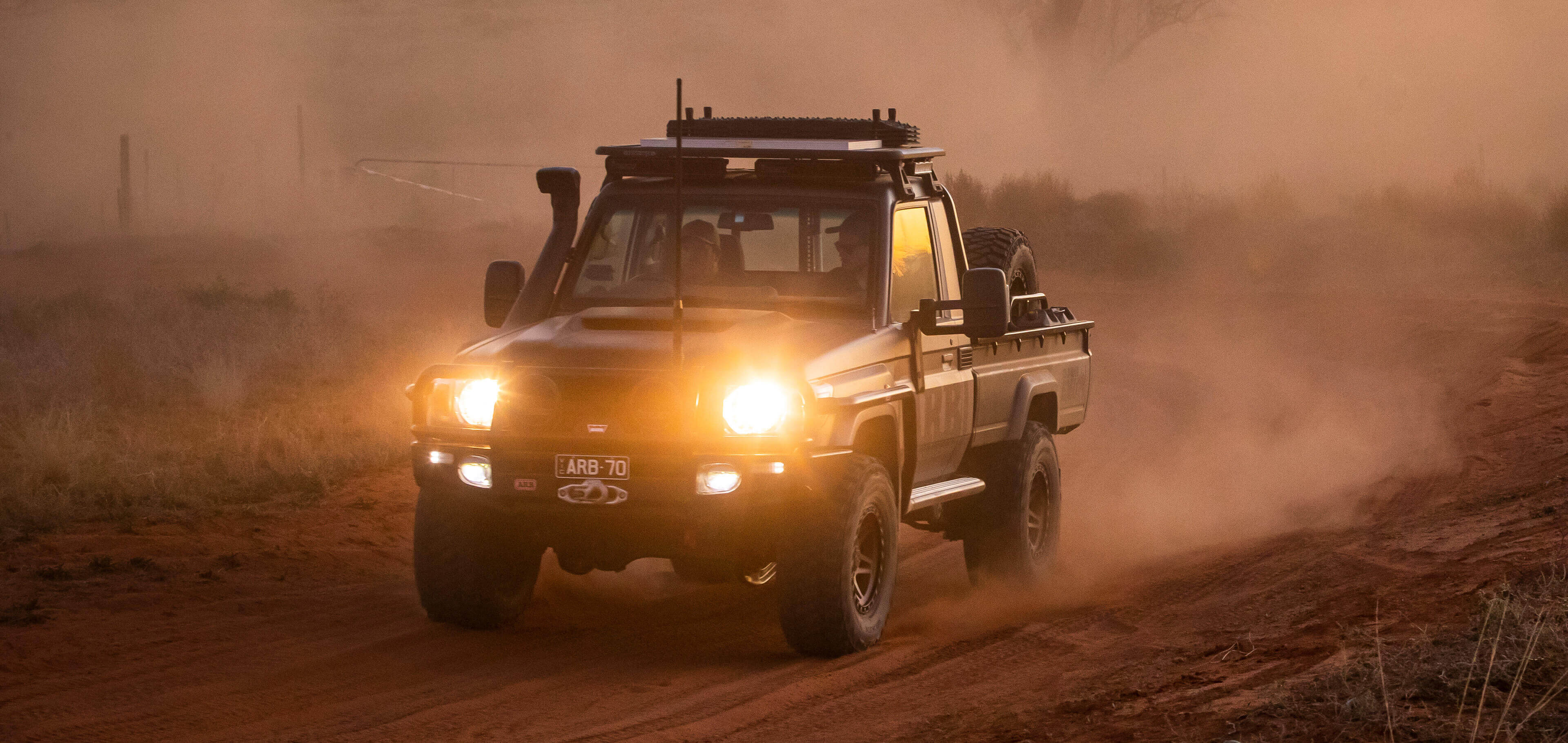-
Products
View -
Select Your Vehicle
Change - Go
- No Favorites
With the increasing popularity of 4WD vehicles and SUVs in Australia, weekend off road adventures with the family are more accessible than ever. But with more vehicles on the Outback tracks, it means there’s a higher chance of unexpected surprises and bingles with other vehicles. If you’re one of the many newcomers to the game, or even an old hat with many years of experience under your belt, you may not be aware of the unwritten track etiquette that we, as 4WD enthusiasts, like to adhere to. Following these simple rules will take the stress away from what should be a stress-free weekend getaway anyway!
TREAD LIGHTLY
Leaving a carbon footprint behind on your weekend getaway is something that no 4WD enthusiast encourages, so we ask that you ‘tread lightly’. One of the major attractions of 4WD travel is the spectacular places we get to experience along the way. Whether it’s a crystal clear mountain stream, a snow-covered hut or a vast expanse of red sandy desert, the last thing we want to find when we arrive is the scrappy remains from the previous visitors.
There’s absolutely no excuse for leaving a campsite or picnic area without taking everything you arrived with. That means rubbish, food scraps and, yes, even dog poo. If bins aren’t provided, make sure that you have a roll of garbage bags on hand and take everything away with you.
Driving responsibly by sticking to the marked tracks also reduces the impact you will leave behind in our Outback. There are more marked 4WD tracks around the country than you’ll ever have the time to drive in your lifetime, so there’s no reason to turn your vehicle into a bull dozer and forge your own path. Stick to the marked routes and, in order to prevent unnecessary track damage, learn to recognize when a track is unpassable before jumping, all guns blazing.
By simply respecting the environment around you, the great Australian bush will remain accessible for our children and their children for decades to come.
BE SELF SUFFICIENT
It’s a fact of life that novice or inexperienced 4WDers are going to encounter some troubles in their first few 4WD trips. After all, that’s how we learn. So, if you’re starting out, it’s more important than ever to carry your own recovery gear – a snatch strap, a shovel and some rated shackles at a bare minimum.
Although most fellow 4WDers are generally happy to lend a helping hand when finding someone in strife, they are still taking a substantial amount of time out of their own 4WD adventure to help out a complete stranger. The last thing they would appreciate receiving back their own dirty, wet and muddy snatch strap for their trouble, all because you didn’t have your own on hand. Definitely not cool.
Communication and navigation gear, food and water are all other essential equipment you need to prepare prior to your off road adventure. A UHF should be carried during any off road trip, not only to use for outgoing communication, but also to listen for other vehicles or convoys that may be in the same vicinity as you. With many single vehicle tracks dotting the country, it’s always nice to know in advance when you’re going to encounter someone coming the other way, in order to find a suitable place to pull over.
Food and water, including enough to tide you over for an additional period of time should you become stranded are also vitally important.

RIGHT OF WAY
Speaking of single vehicle tracks, 4WD etiquette dictates that vehicles travelling uphill have right of way over vehicles travelling downhill. When you think about it, the reasons for this are actually quite obvious. It’s safer to reverse back up a hill than it is to reverse back down. Likewise it’s much easier to get underway again when you’re travelling downhill.
By using your UHF and making your position known to other vehicles in the area, the chance of meeting another vehicle on a difficult section of track should be relatively remote.
If the situation does occur, attempt to raise the other vehicle over the radio and communicate the plan of attack. Even if they are travelling uphill (and have right of way), they may be in position to move off the track more easily than you. Communication is the key here.
CONVOY TRAVEL
Convoy travel is a big part of the 4WD lifestyle. After all, an adventure is much more rewarding if you have some mates to share it with (and reminisce with afterwards). Whilst convoy travel is generally a lot of fun, it can be frustrating for other 4WDers if some basic rules are ignored.
During convoy travel, the UHF can be both a source of information and entertainment. However, it’s important to remember that your conversations can be heard by anyone else on the same channel. So, keep language ‘family safe’ and don’t spend every waking minute chatting to the other vehicles in your convoy. This not only prevents important information to be heard, but what might be an interesting story to your group, probably isn’t to the ten other vehicles in the area that are sharing your channel.
Finally, to avoid losing someone in your convoy, particularly when the group is spread out. It’s good practice to always wait at a turn off until the vehicle following you arrives at the turn (or acknowledges that they can see you turning over the radio).
Keep this etiquette in mind next time you hit the tracks and you’ll be sure to get the most out of your adventure.

Uncover the gear as well as some tips and tricks you will need for your next adventure off grid! Read here!


View online or order a printed copy
Enter your email address to receive updates about our products and events as well as newsletters.

